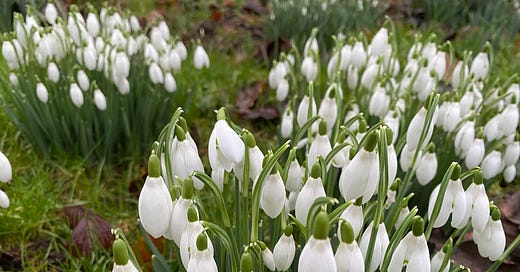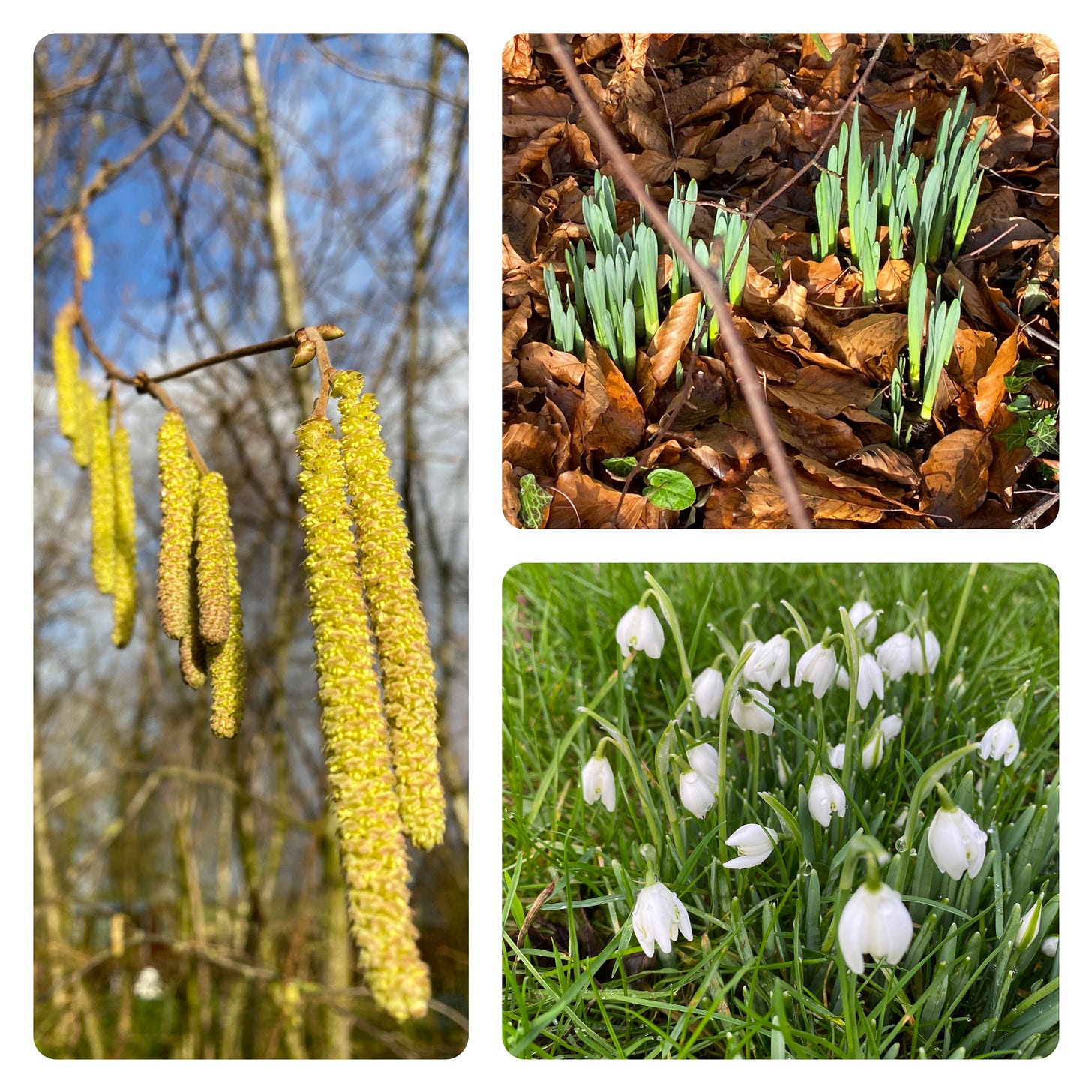Thank you for choosing to read this edition of Regen/Notes with thoughts and reflection on Imbolc and its relevance today in the context of regenerative and sustainability, based on the Regen Notes from Imbolc 2023.
Imbolc is a seasonal festival celebrated on February 1st and marks the midpoint between the winter solstice and spring equinox. It is traditionally associated with the awakening of nature after the long, dark winter, and is a time to celebrate the coming of spring and new beginnings.
For sustainability and regenerative practitioners and organisations in the built environment, being aware of and aligned with the changing seasons is essential in fostering enhanced sustainability behaviours, stewardship, and reciprocity with the natural world. And not just for us who advocate, support, design, build, and manage the built environment, but also for those who live, work, and play in our buildings and facilities.
Understanding the natural patterns of the environment allows us to make informed decisions to support a sustainable built environment and create spaces that encourage positive environmental behaviours. By taking advantage of the resources each season has to offer, we can deepen appreciation for the delicate balance of the natural world and work towards better conserving it.
Aligning with the changing seasons also promotes a sense of community and encourages individuals and organisations to come together to celebrate the changes and co-create towards a sustainable future.
Imbolc is associated with the goddess Brigid and is celebrated with rituals, feasts, and the lighting of candles to symbolise the increasing light and warmth of the sun. It is considered a time of purification and renewal and is still celebrated today by modern pagans and those interested in earth-based spirituality.
Imbolc’s focus on the renewal and awakening of nature, as well as its emphasis on purification and new beginnings, aligns well with the principles of sustainability and regenerative awareness. The festival celebrates the cyclical nature of the seasons and the regenerative capacity of the earth, emphasising the interconnectedness of all living things and the importance of preserving and replenishing the natural world.
These values are central to sustainable and regenerative practices, which aim to maintain the balance of the earth’s ecosystems and promote the health and well-being of the planet and all its inhabitants. Being aware of Imbolc can serve as a reminder of our obligations to the earth and encourage us to adopt more sustainable and regenerative practices .
As the daylight lengths increase, we hear the bird dawn chorus growing and seeds stir in the warming soil. Imbolc celebrates this natural processes of regeneration and growth, encouraging us to take care of ourselves and the earth. It is a time to set new intentions, in harmony with the earth, and to celebrate the cycle of life, death, and rebirth.
Snowdrops and bluebells Primroses and daffodils Will ring out loud bells To welcome in the spring Maggie Prior from ‘Year’ (1993)
Let the Light In
Imbolc marks the gradual shift from winter to spring and the increasing power of the sun, with bird dawn chorus, seeds stirring in warming soil and signs of growth in the emergence of yellow and white flowers, such as aconites, hazel catkins, and snowdrops, which attract early pollinators.
Snowdrops (Galanthus, Milk-Flower) certainly mark this time of year, figure prominently in art and literature and are a great illustration of the complex interconnections across nature, and the effect of climate change. The flowering of those pearl-white petals is triggered by temperature, to align with the emergence of those early waking pollinators. This year, 2024, the flowering is reported earlier than usual.
The darker days of winter may well be behind us but we still have cold and windy days ahead. It is still a time for rest, yet increasingly also a time to nourish ourselves, in line with the earth’s renewal, it is a threshold and a time to make room for the new, open doors, for setting new intentions, and embrace change. Imbolc provides an opportunity to reflect on the ways in which we can contribute to a healthier and more regenerative future for the planet and us.
Activities we can do as individuals or in organisations around Imbolc to further our connectivity with nature …
Ask Ourselves
How do I feel about the transition from winter waning to spring stirring? What do I feel that I need to do at this time to deepen my connectivity with nature for a healthier and more regenerative future?
Revisit Values
Now is a good time for inner growth as well as outer growth, to revisit our values and set intentions or plans for the year ahead. An opportunity to revisit the Inner Development Goals in support of Sustainability Development Goals.
Plant Seeds
Imbolc is a celebration of the coming of spring and new life. Plant some seeds in your garden or in pots, and watch them grow throughout the season.
Go on a Nature Walk
Take a walk in nature and observe the signs of spring, such as buds on trees or new growth. Use this time to connect with the earth and reflect on the changing of the seasons.
Spend time with a Birch Tree
Birch is the tree associated with Imbolc, it is one of the first trees to bloom in late winter/early spring, signalling the promise of renewed life and fertility after the dormancy of winter. Its slender white trunk and emerging green leaves represent purity, new beginnings and growth. It also has important ecological significance (see Tree for Life tree facts)
Take Outdoor Meetings
As weather permits, hold walking meetings or set up outdoor seating areas to get some fresh air and a change of scenery that can boost creativity.
Film screening
Host a sustainability documentary at lunchtime or community viewing and discussion that inspires eco-consciousness.
Imbolc encourages reciprocity with the natural world and to think about how we can live in harmony with the earth. Whether through reducing our carbon footprint, embracing regenerative practices, or simply being mindful of the resources we consume, this ancient seasonal marker serves as a timely call to be in service (Seva) with the earth. It inspires us to work towards a healthier planet where natural systems are preserved and resources are replenished sustainably.
Birth is here, it’s breaking out of death’s hour.
In fertile bulb and bud we see the promised flower
Deep in the circle of the sun’s power now returning
The heart is light, the step is bright in sunshine
Throw caution to the winds now that the weather’s fine.
Dance in the joy that is yours and mine
In Spring returning
“Birth” by Maggie Prior from Year (1993)Related
Lost Rain Forests and Joy of Birds: Unlocking the potential of Britain's lost rainforests: restoring carbon, biodiversity and health on our doorstep (RegenNotes)
Reflecting on Imbolc 2023: its Relevance to Regenerative Sustainability (RegenNotes)
Reconnecting(RegenNotes)
Let the Light In: Spell Songs II review – a magical return to nature (Guardian)





